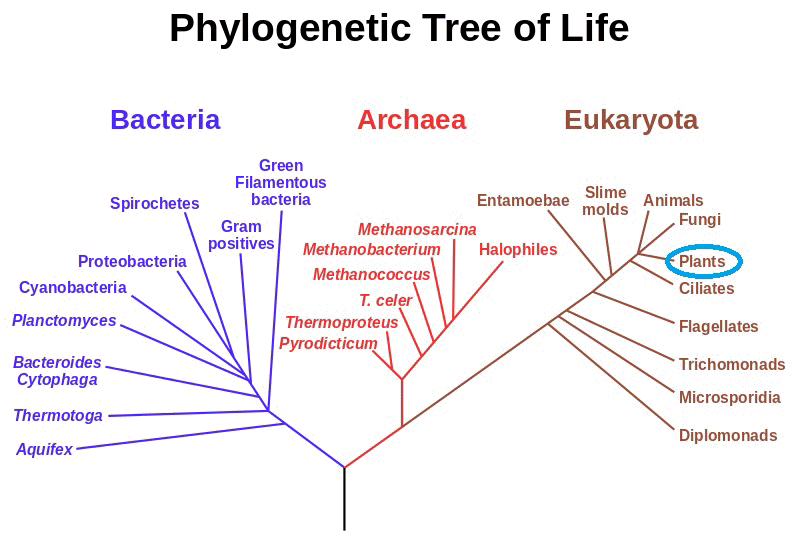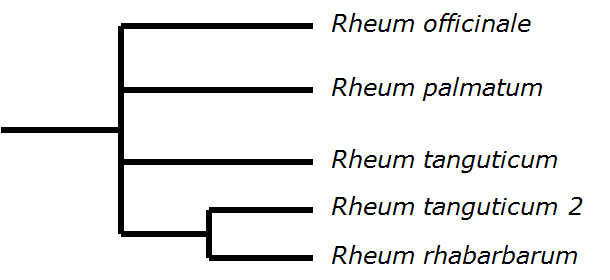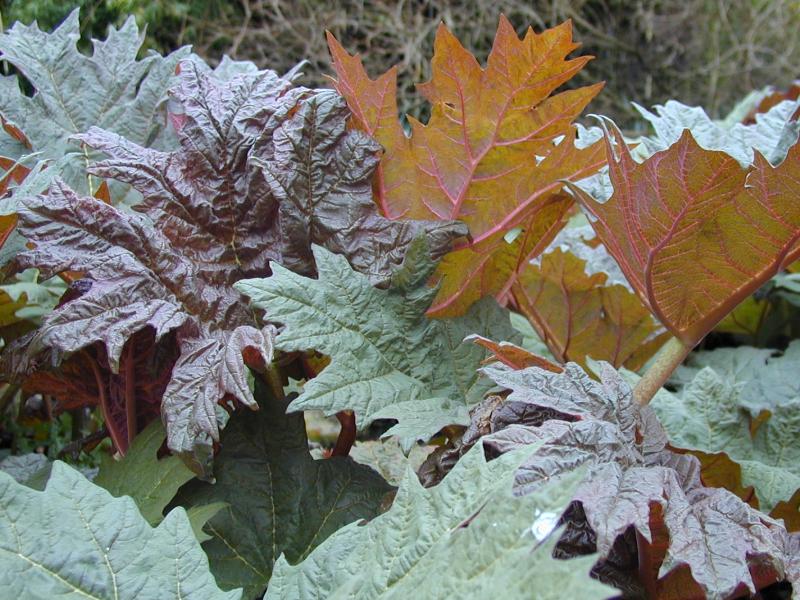Classification
Lets take a closer look at what each of these taxonomic levels really mean!
Domain: Eukarya: Rhubarb is a eukaryote because it possesses a true nucleus and membrane bound organelles. To see other organisms that are part of the domain eukarya, check out the American Crocodile, Crocodylus actus and an expensive spice, Saffron, also known as Crocus sativus.
The Phylogenetic Tree of Life below is based on molecular data, RNA, and it shows the three domains that an organism can come from. Each branch on the tree shows a different grouping of organisms. Every organism will fit under one of these three domains, Bacteria, Archaea, or Eukaryota. Rheum rhabarbarum is part of the domain Eukaryota, specifically the Plants (circled below in blue).
Super-Group: Archaeplastida: Rhubarb is a part of this super-group because it undergoes photosynthesis and exhibits alternation of generations. This super-group has developed from endosymbiotic cyanobacteria and is pigmented with chlorophyll which causes the green color in land plants.
Kingdom: Plantae: Rhubarb is in the kingdom plantae because it has the ability to photosynthesize, has a chloroplast, and has cell walls made of cellulose. The closest relative of the plants is the green algae, but these two differ in that green algae does not have the tissues and orderly transport systems for water and nutrients as plants do. This kingdom includes all land plants; such as mosses, ferns, trees, etc. Take a look at the Peanut, also known as Arachis hypogaea or Dill, Anethum graveolens, that are also part of the kingdom plantae.
Phylum: Magnoliophyta: Rhubarb is part of this phylum because it is an angiosperm, or a flowering plant. This is the largest phyla of the kingdom plantae and is characterized by roots, vascular tissues, stems, leaves, flowers, and fruits. Two other organisms that are part of this phylum are the Lemon, Citrus limon, as well as Lemongrass, Cymbopogon citratus.
Class: Magnoliopsida: Rhubarb is a part of the class magnoliopsida which is also known as dicotyledons, or dicots. They contain two seed leaves (cotyledons), net-like veins, and vascular tissue arranged in rings. To see two other organisms that are a part of this class, take a look at the Passion Fruit, or Passiflora edulis or Macadamia Nuts, Macadamia tetraphylla.
Order: Caryophyllales: Rhubarb is a part of this order because it is a flowering plant that is adapted for extreme environments. These can be environments that have nutrient poor soils, extreme high or low temperatures, or high saline.
Family: Polygonaceae: Rhubarb is a part of this family because it is a perennial that has swollen nodes and grows from thick rhizomes.
Genus: Rheum: Rhubarb is the majority of what makes up this genus. It is characterized by a perennial that grows from fleshy roots. Rheum officinale, one of the first species found in China is also a part of this genus.
The phylogenetic tree below is based on molecular data of the genus Rheum. The first two species are the main species of Rheum that are found in Europe, and the first four species are the main species that were first found in China. The last species, Rheum rhabarbarum, was found after the others and is the species most prevalent in North America.
Species: Rheum rhabarbarum: What we call Rhubarb!
Rheum rhabarbarum was derived from Rha, which was the ancient name of the river Volga, the banks where it was grown. It came to be known as Rhubarb when it was translated to English from the Latin word rhabarbarum.
Continue on to Habitat.
Go back to Home. Go to Multiple Organisms. Go to UW-La Crosse.



